Was ist eine Blei-Säure-Gel-Batterie??
Wenn Sie auf dem Markt für eine Tiefzyklus-Batterie sind, Sie werden feststellen, dass die "Lead-Sacid"" Die Kategorie ist breiter als Sie vielleicht denken. Eine häufige Frage, die wir bekommen, ist, "Was genau ist eine Gelbatterie?, und wie unterscheidet es sich von einer Standard-Blei-Säure-Batterie?" Das Verständnis dieser Technologie ist der Schlüssel zur Auswahl der richtigen Leistungslösung für Ihre Anforderungen.
Eine Blei-Säure-Gel-Batterie, allgemein als "Gelbatterie" bekannt," ist eine bestimmte Art der versiegelten Blei-Säure-Batterie (VRLA). Im Gegensatz zu herkömmlichen überfluteten Blei-Säure-Batterien, die Flüssigelektrolyt enthalten, Eine Gelbatterie verwendet eine verdickte, gelender Elektrolyt (Schwefelsäure mit Kieselsäure gemischt). Dieser wichtige Unterschied macht die Batterie verschüttet, die sich verblüfft, Vibrationsbeständige, und vollständig wartungsfrei, einen bedeutenden Komfortvorteil gegenüber seinen traditionellen Kollegen bieten.
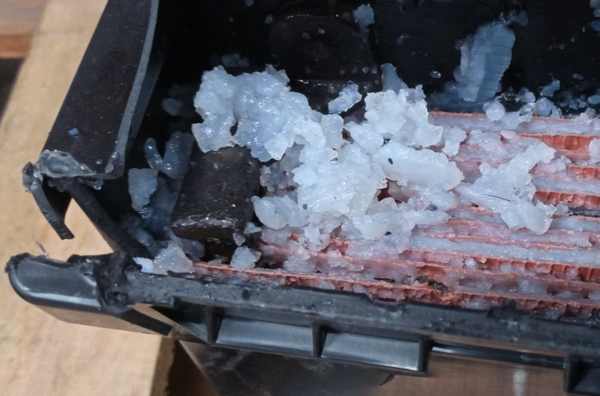
Bei Gycx Solar, Wir bieten verschiedene Batterie -Technologien an, weil wir wissen, dass jeder seinen Platz hat. Verständnis der Nuancen von a Blei-Säure-Gel-Batterie Hilft Ihnen zu entscheiden, ob die einzigartigen Vorteile zu Ihrer Bewerbung geeignet sind. Lassen Sie uns einige gemeinsame Fragen untersuchen.
Was tötet eine Blei-Säure-Batterie?
Ob Sie ein Gel haben, Hauptversammlung, oder herkömmliche überflutete Batterie, Alle Blei-Säure-Batterien sind anfällig für ähnliche Fehlermodi. Zu wissen, was "tötet" Sie sind der erste Schritt in Richtung Vorbeugung und Maximierung ihrer Lebensdauer.
Die häufigsten Mörder jeder Blei-Säure-Batterie sind Schwefelung (Dies tritt auf, wenn eine Batterie in einem entladenen Zustand bleibt), chronische Unterleitung, Und Überladung (Welche Schäden von Platten und trocknen versiegelte Typen aus). Andere Hauptfaktoren sind Extreme Hitze, die die Abbau beschleunigt, Konstante tiefe Entladungen über seine Bewertung hinaus, und für überflutete Typen speziell, Ein einfaches Mangel an Wartung (nicht mit Wasser übertreffen).
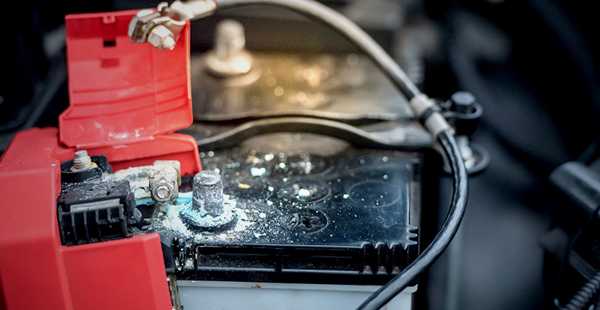
Tauchen tiefer: Die Feinde der Batterie -Langlebigkeit
Schauen wir uns diese Fehlermodi ausführlicher an:
- Schwefelung (Der stille Mörder): Wenn eine Blei-Säure-Batterie nach dem Gebrauch nicht vollständig aufgeladen wird, oder sitzt in einem entlassenen Zustand, Hardkristalle der Bleisulfatform auf den Bleiplatten. Diese Kristalle ersticken die Fähigkeit der Batterie, Strom zu akzeptieren und zu liefern. Schwere Sulfatierung ist oft irreversibel.
- Überladen: Verwenden eines falschen oder fehlerhaften Ladegeräts, das zu viel Spannung oder Strom anwendet." die Batterie. In einer überfluteten Batterie, Es verursacht übermäßigen Wasserverlust. In einer versiegelten Gelbatterie, Es ist noch destruktiver, da es den Elektrolyten dauerhaft aussieht.
- Unterladen: Konsequent nicht die Batterie wieder auf einen vollständigen Weg bringen 100% Die Ladung ermöglicht es auch, sich im Laufe der Zeit zu beseitigen, allmählich reduzieren seine Kapazität.
- Extreme Hitze: Wärme ist der ultimative Feind von Blei-Säure-Batterien. Es beschleunigt die Korrosion der inneren Platten und erhöht den Wasserverlust bei überfluteten Typen und die Trocknung bei versiegelten Typen. Eine Batterie in einem heißen Klima (Z.B., durchschnittlich 90 ° F. / 32°C) kann nur die Hälfte so lange wie die gleiche Batterie bei 77 ° F halten / 25°C.
- Übermäßige tiefe Entladungen: Während sie "tiefer Zyklus sind," Das Abtropfen einer Batterie jedes Mal vollständig belastet und führt zu einer kürzeren Lebensdauer im Vergleich zu flacheren Entladungen.
- Vernachlässigung (für überflutete Batterien): Für traditionelle überflutete Typen, Einfach zu vergessen, den Elektrolytspiegel mit destilliertem Wasser zu überprüfen und aufzunehmen, ist der häufigste Grund für vorzeitige Ausfälle. Die Spitzen der Bleiplatten werden ausgesetzt, und dieser Teil der Batterie wird dauerhaft beschädigt. Dies ist ein Problem, dass Gel und andere versiegelte Batterien vollständig lösen.
Was ist besser?, Bleisäure oder Gelbatterien?
Dies ist die klassische Frage. Um es zu beantworten, Wir müssen uns daran erinnern, dass eine Gelbatterie Ist eine Blei-Säure-Batterie. Der wahre Vergleich ist zwischen a Versiegelte Gelbatterie und a Traditionell überflutete Blei-Säure (Fla) Batterie.
Weder ist universell "besser"; Die beste Wahl ist ein Kompromiss zwischen Bequemlichkeit und Kosten. EIN Gelbatterie ist besser, wenn Sie a priorisieren Wartungsfrei, verschütteterdicht, und leicht zu installieren Lösung. Ein traditionelles Überflutete Blei-Säure (Fla) Batterie ist besser, wenn Ihr Hauptanliegen darin besteht, die zu erreichen niedrigstmögliche Vorauskosten Und es macht Ihnen nichts aus, regelmäßig Wartung durchzuführen.
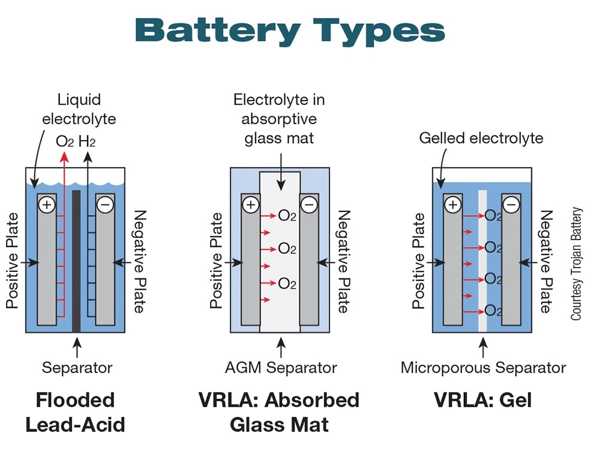
Tauchen tiefer: Ein Kopf-an-Kopf-Vergleich
Vergleichen wir sie über wichtige Kategorien hinweg:
- Wartung:
- Gel: Gewinner. Es ist versiegelt und erfordert keine Bewässerungs- oder Elektrolytprüfungen.
- Fla: Erfordert regelmäßige destillierte Wassertop-ups und Terminalreinigung.
- Sicherheit & Installation:
- Gel: Gewinner. Es ist verschüttet, Auch wenn der Fall beschädigt ist, und kann in jeder Position montiert werden. Es erzeugt auch minimales Gas während des normalen Betriebs, Dadurch für weniger belüftete Gebiete sicherer.
- Fla: Muss aufrecht installiert werden, um Säureverschmutzungen zu verhindern. Es wird während des Lades brennbares Wasserstoffgas gelüftet und ein gut belüftetes Gehäuse benötigt.
- Vorabkosten:
- Fla: Gewinner. Es bietet die niedrigsten Kosten pro Stunde zum Zeitpunkt des Kaufs.
- Gel: Trägt eine erhebliche Preisprämie für seine Bequemlichkeit und das versiegelte Design.
- Aufladen:
- Fla: Robuster und verzeihter von geringfügigen Abweichungen bei der Ladespannung.
- Gel: Sehr empfindlich. Erfordert eine spezifische, Ladungsprofil mit niedrigerem Spannung, um dauerhafte Schäden zu vermeiden.
- Haltbarkeit:
- Gel: Bestehender gegen Schäden durch Vibration und Schock.
- Fla: Kann extrem langlebig und langlebig sein Wenn akribisch gepflegt.
Das "besser" Die Wahl hängt von Ihrer Bewerbung ab. Für eine Fern -Solar -Installation, bei der die Wartung schwierig ist, Gel ist besser. Für einen budgetbewussten Benutzer mit einer leicht zugänglichen Batteriebox, FLA kann ein großer Wert sein.
Können Sie eine Blei-Säure-Batterie durch eine Gelbatterie ersetzen??
Sie verwenden eine traditionelle überflutete Blei-Säure (Fla) Batterie und die Wartung satt haben. Können Sie einfach eine Gelbatterie mit derselben Größe kaufen und sie eintauschen??
Ja, Sie können häufig eine überflutete Blei-Säure-Batterie durch eine Gelbatterie ersetzen, Aber das kommt mit einem kritischen, nicht verhandelbare Bedingung: Sie müssen sicherstellen, dass Ihr Ladesystem mit Gelbatterien kompatibel ist. Dies bedeutet Ihr Solar -Ladungs -Controller, Fahrzeug -Generatorregler, oder AC -Ladegerät muss ein bestimmtes "Gel haben" Einstellung oder ersetzt durch einen, der tut, der tut. Wenn Sie einfach den Akku austauschen, während Sie ein Ladegerät verwenden, das nach überfluteten Batterien programmiert ist, teurer Gelbatterie.
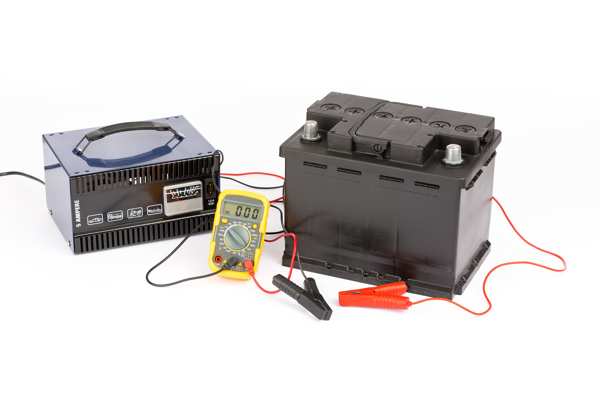
Tauchen tiefer: Die kritische Kompatibilitätsprüfung
Wenn Sie dieses Upgrade planen, Folgen Sie dieser Checkliste:
- Überprüfen Sie die physikalischen und elektrischen Spezifikationen: Stellen Sie sicher, dass die neue Gelbatterie die gleiche Nennspannung hat (Z.B., 12v), Ähnliche physikalische Dimensionen, die Ihrem Raum entsprechen, und eine angemessene Ampstunde (Ah) Kapazität für Ihre Bedürfnisse.
- Prüfen Sie Ihr Ladesystem (Der wichtigste Schritt):
- Sehen Sie sich jedes Gerät an, das Ihren Akku lädt (Solarregelung, Shore Power Charger, usw.).
- Überprüfen Sie, ob die Einstellungen vom Typ Batterie vom Typ Batterie enthält (Z.B., Ein Schalter oder ein digitales Menü mit Optionen für "überflutete"," "Hauptversammlung," und "Gel").
- Wenn ein "Gel" Einstellung existiert: Du bist gut zu gehen! Machen Sie den Tausch und stellen Sie sicher, dass Sie die Einstellung Ihres Controllers ändern(S) zu "Gel."
- Wenn kein "Gel"" Einstellung existiert: Ihr aktuelles Ladegerät ist unvereinbar. Die Spannung ist zu hoch für eine Gelbatterie. Du muss das Ladegerät ersetzen Mit einem modernen Smart -Ladegerät mit einem Gelprofil gleichzeitig installieren Sie den neuen Akku.
GYCX Solar Story: "Dies ist eine häufige Beratung, die wir bei GYCX Solar haben. Ein Kunde wollte auf Gelbatterien für seinen Wohnmobil upgraden. Wir haben ihren vorhandenen Solarkontroller bewertet und festgestellt, dass es sich um eine Basis handelte, Nicht programmierbares Modell. Wir konnten die richtigen Gelbatterien und eine neue beschaffen, korrekt programmierter Controller als Paket, Sicherstellen, dass ihr Upgrade erfolgreich war und ihre neuen Batterien jahrelange wartungsfreie Service bieten würden."
Ist eine Gelbatterie, die das zusätzliche Geld wert ist?
Gelbatterien haben einen höheren Preis als ihre überfluteten Kollegen. Dies führt zu der ultimativen Frage: Ist diese zusätzlichen Kosten wirklich gerechtfertigt?
Eine Gelbatterie ist Das zusätzliche Geld wert, wenn Sie einen hohen Wert für die Bequemlichkeit platzieren, Sicherheit, und Installationsflexibilität. Wenn Sie eine Batterie für eine Anwendung benötigen, bei der die regelmäßige Wartung schwierig oder unmöglich ist, wo Säureverschmutzungen katastrophal wären, oder wo der Akku in einer anderen Ausrichtung als aufrecht installiert werden muss, Dann lohnt sich der Prämiepreis für eine Gelbatterie oft für die Beruhigung und den problemlosen Betrieb, den es bietet.
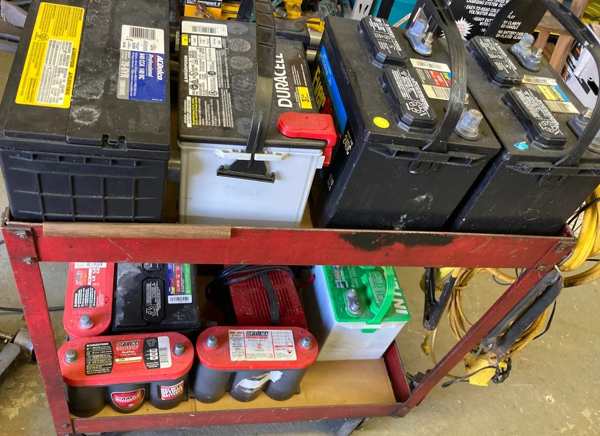
Tauchen tiefer: Analyse des Wertversprechens
Lassen Sie uns zusammenbrechen, wenn die zusätzlichen Kosten sinnvoll sind:
- Es lohnt sich, wenn:
- Wartung ist ein Ärger: Ihre Batterien befinden sich an einem schwer erreichbaren Ort, Oder Sie möchten einfach nicht die Aufgabe, den Wasserstand zu überprüfen.
- Sicherheit ist von größter Bedeutung: Die Batterie ist in einer Bootskabine installiert, Wohnraum Wohnraum, oder eine schlecht belüftete Fläche, in der Wasserstoff -Gassing und potenzielle Säureverschmutzungen inakzeptable Risiken sind.
- Ihre Anwendung beinhaltet Schwingung: Wie in einem Offroad-Fahrzeug oder Meeresschiff, Wo der Schockwiderstand des Gels ein erheblicher Vorteil ist.
- Sie benötigen eine flexible Montage: Ihr Speicherplatz erfordert, dass die Batterie auf der Seite oder in einem Winkel installiert wird.
- Es könnte sich nicht lohnen, wenn es sich lohnt, wenn:
- Ihr Hauptziel sind die niedrigstmöglichen Kosten für Voraus.
- Ihre Batterien sind leicht zugänglich, Gut belüfteter Batteriebox.
- Sie sind fleißig und haben es nichts aus.
- Die nächste Wertebene: Lithium (LFP):
Es ist auch erwähnenswert, dass, wenn Sie bereits eine Prämie für die Bequemlichkeit des Gels bezahlen möchten, Es ist oft sinnvoll, die moderne LFP zu bewerten (Lithium -Eisenphosphat) Batterien. Während sie noch höher im Voraus kosten, LFP1 Batterien bieten alle Wartungsfreien an, Verschüttungssichere Vorteile von Gel, Aber mit einer weit überlegenen Lebensdauer (5-10 mal mehr Zyklen), höhere effizienz, geringeres Gewicht, und größere nutzbare Kapazität. Bei GYCX Solar, Wir helfen unseren Kunden, den Lebensdauerwert all dieser Optionen zu vergleichen, um die intelligenteste langfristige Investition zu finden.
Also, ist eine Gelbatterie besser als eine herkömmliche überflutete Blei-Söcid-Batterie? Es ist ein klassischer Kompromiss: Komfort vs. kosten. Eine Gelbatterie bietet einen Safe, vielseitig, und wartungsfreie Lösung, Dies ist jedoch zu einem Prämienpreis und erfordert eine präzise, Kompatible Ladesystem.
Ob eine Gelbatterie die richtige Wahl für Sie ist, oder wenn eine herkömmliche überflutete Batterie oder ein modernes Lithiumsystem besser passt, Unser Expertenteam bei GYCX Solar kann Ihnen helfen, die Vor- und Nachteile für Ihre spezifischen Bedürfnisse zu verstehen. Kontaktieren Sie uns noch heute für eine professionelle Beratung!
Wenn Sie das Konzept von LFP verstehen. ↩
